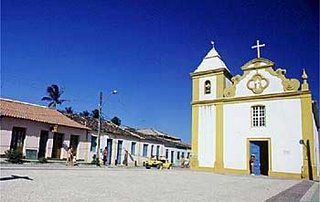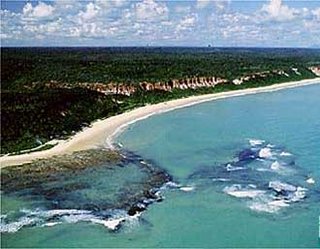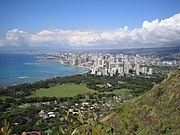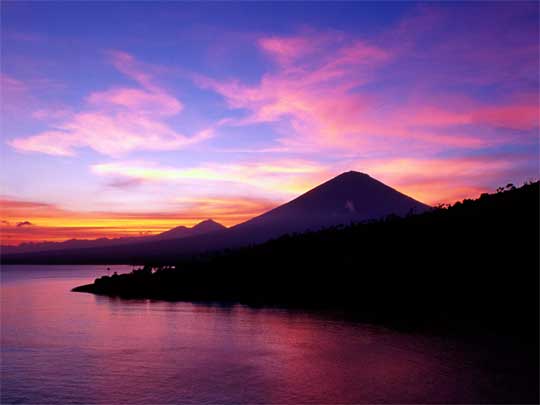Go for a swim in the island's sea and sun
Sant Antoni de Portmany
Es Pouet
Playa de Sant Antoni o de S´Arenal
Caló des Moro
Cala Gració y Cala Grassioneta
Cala SaladaSanta Eulària del Riu
Playa de Santa Eulalia
Cala Llonga
Playa d´es Canar
Cala Llenya
Playa des Figueral
Playa de Can Martina
Cala Pada
Playa des Niu Blau
Cala Nova
Playa de S´Argamassa
Cala Boix
Cala Mastella
Playa del Río de Santa Eulalia
Calo de S´Alga
Canal d´en Martí (Pou des Lleó)
Aigua Blanca - Es Paller des Camp
Playa de S´EstanyolSant Joan de Labritja
Puerto de San Miguel, Cala des Moltons, Es Pas de s´Illa
Cala Xarraca
Cala de Portinatx
S´Illot des Renclí
Cala Xuclá
Cala d´en Serra
Cala de San Vicente
Cala de Benirrás
How to Get there:
Ferries and Flights
Ibiza is accesible by air and sea. Belpw are the contact numbers for the major airlines and ferry companies that serve the island
Satellite photo of Baleares
Carrier Contact Numbers
Iberia 902 400 500
Flights to the Iberian Peninsula and inter-islandsSpanair 902 13 14 15
Flights to the Iberian PeninsulaIbiza Airport 971 809 900
Vueling España: 902 333 933
Air Berlin 902 320 737
Ibiza FerriesCheck flight and sea transport timetables we place at your disposal:
Trasmapi 971 312 071
Ferries Ibiza - Formentera - - Maritime Station EivissaIscomar 902 119 128
Ferries to the Iberian Peninsula and inter-islandsTransmediterrania - Umafisa Lines 902 454 645
Ferries to the Iberian PeninsulaBalearia 902 160 180
Ferries to the Iberian Peninsula and inter-islandsMarítima de Formentera 971 32 22 10
La Savina - FormenteraMediterránea Pitiusa 971 322 443
Inserco, S.C. Ltda. 971 322 210
Ibiza Boat Charter
Powerboats
+34 971 341 759
Visitor Information
Situated in the south of the Balearic Islands in the Western Mediterranean, Ibiza has an area of 572 km2 (222 square miles), longest journey across the island is just 40 km (25 miles!), and a beautiful coast that stretches along 210 km . It is the third biggest island in the archipelago and, together with its small sister Formentera, it forms the "Pitiusas", a name given by the Greeks, meaning "islands of pine trees".
Due to its convenient location in the Mediterranean Sea, as well as the proximity of the African coast, Ibiza benefits from a continental, generally temperate climate, boasting dry summers with an average temperature of approximately 25-30º C (77- 86 ºF ), and damp, mild winters with little rain and an average temperature of 15- 20ºC (59-68º F), thus guarantying a pleasant stay all year round.
As a historically strategic enclave in the Mediterranean, Ibiza has been home to a set of different cultures that left their influence throughout the centuries, resulting into a cultural contrast still perceptible on the island. The most cosmopolitan atmosphere becomes harmoniously intermingled with ancient traditions and the island's genuine landscape.
With its wonderful climate, position in the Mediterranean, its excellent sunshine record and its historical heritage the island of Ibiza has everything to offer the tourist and the holiday maker.
Useful phone numbers
The following phone numbers may be useful during you stay in Ibiza- Town councils and public bodies:
- Consell Eivissa i Formentera 971 195 900
- Town Council of Eivissa 971 397 500
- Town Council of Sant Antoni de Portmany
971 340 111
- Town Council of Santa Eulària del Riu 971 332 800
- Town Council of Sant Joan de Labritja 971 333 003
- Town Council of Sant Josep de sa Talaia 971 800 125
- Sant Francesc de Formentera 971 332 034- Consulates:
- Germany 971 315 763
- France 971 301 216
- Itay971 315 428
- Mónaco 971 793 449
- Netherlands 971 300 450
- United Kingdom and Northern Irland 971 301 818- Emergencies:
- Fireman Eivissa 971 313 030
- Fireman Formentera 112
- Forest Fire 112
- Ambulances- Accidents & Emergencies 971 191 009 / 971 192 262
- Ambulances- Red Cross 971 202 222 / 971 295 000- Medical care centres
- Insalud-emergencies 061
- Eivissa 971 391 177 / 971 391 616
- Sant Antoni de Portmany 971 345 102
- Sant Joan de Labritja 971 333 137
- Sant Josep de Sa Talaia 971 800 458
- Santa Eulària del Riu 971 332 453 / 971 339 050
- Formentera- Sant Francesc 971 332 357 / 971 332 369- Hospitals
- Can Misses 971 397 000
- Cas Serrer 971 392 960
- Cruz Roja 971 390 303
- Police Station 971 39 88 31
- Civil Guard Eivissa 971 30 11 00
- Civil Guard Sant Antoni de Portmany 971 34 05 02
- Civil Guard Sta. Eulària del Riu 971 33 02 27
- Civil Guard Sant Joan de Labritja 971 33 30 05
- Local Police 092
- State Police 091
- Civil Defence Organisation 971 31 37 13- Turist information offices (OITs)
- Eivissa 971 301 900
- Sant Antoni de Portmany 971 343 363
- Santa Eulària del Riu 971 330 728
- Sant Francesc de Formentera 971 332 057- Transport:
By sea
- Transmediterránea
- Umafisa Lines 902 454 645
- Balearia 902 160 180
- Gestión Naviera Sant Antoni 971 34 81 46
- Gestión Naviera Eivissa-Formentera 971 31 44 86
- Trasmapi-Sercomisa-Baleària 971 31 07 11Taxi Stops
- Taxis Sant Joan 971 33 30 33
- Taxis Santa Eulària 971 33 00 63
- Taxis Sant Antoni 971 34 00 74
- Taxis Aeropuerto 971 39 54 81
- Taxi Eivissa 971 39 84 83
- Taxi Sant Josep 971 39 83 40
- Taxi Sant Antoni 971 34 37 64
- Taxi Santa Eulària 971 33 30 33By air
- Iberia Reservation Service 902 400 500
- Airport Information 971 80 90 00
Ibiza island / Useful tips
Use our tips below to help plan the perfect holiday in Ibiza:
- Bear in mind the time of the year you're planning to visit the island. High season usually starts in middle June and finishes around the beginning of October. During that period, you'll find a more lively atmosphere, a hotter climate and a wider choice of entertainment. Our advice is to come any time during the months of April, May, June.but beware! In August, as you may well imagine, the island is very crowded and the island's resources become scarce.- Due to the same reason, take into account the opening and closing dates of hotels and main clubs. Not all hotels remain open all year long, and discos usually open only during high season months.
-Public transport is quite limited in the island, so that we advise you to rent a car or a scooter, or alternatively check bus timetables before going out. Get out and about, don't spend every day at the hotel pool!
- Select the accommodation choice that best suits your needs. There are hotels right at the heart of tourist areas, so that you'll have most services and facilities at hand; and there are other accommodation possibilities in quiet areas: rural tourism hotels or hotels located far from urban centres. There are also hotels for families or with a younger atmosphere, with a wider range of facilities,.
source: http://www.toibiza.com/en















